What causes gallstones in gallbladder. What Causes Gallstones in the Gallbladder: Symptoms & Causes Explained
What causes gallstones in the gallbladder? Discover the symptoms, types, causes, risk factors, diagnosis, and treatment options for gallstones.
Understanding Gallstones
Gallstones are solid pieces of material that form inside the gallbladder, a small organ located under the liver. These stones can range in size from a grain of sand to a golf ball and are typically composed of cholesterol or bilirubin, a waste product produced when red blood cells are broken down.
Types of Gallstones
There are two main types of gallstones:
- Cholesterol stones – These are the most common type, accounting for around 80% of all gallstones. They are usually yellow-green in color.
- Pigment stones – These are smaller and darker in color, and are made up of bilirubin.
Symptoms of Gallstones
Many people with gallstones do not experience any symptoms. However, when a gallstone blocks the flow of bile through the bile ducts, it can cause a “gallbladder attack” with symptoms such as:
- Pain in the upper abdomen, often under the right ribcage
- Pain in the right shoulder or back
- Nausea and vomiting
- Digestive issues like indigestion, heartburn, and gas
Seek immediate medical attention if you experience severe abdominal pain, fever, chills, or yellowing of the skin or eyes, as these may be signs of a serious infection or inflammation.
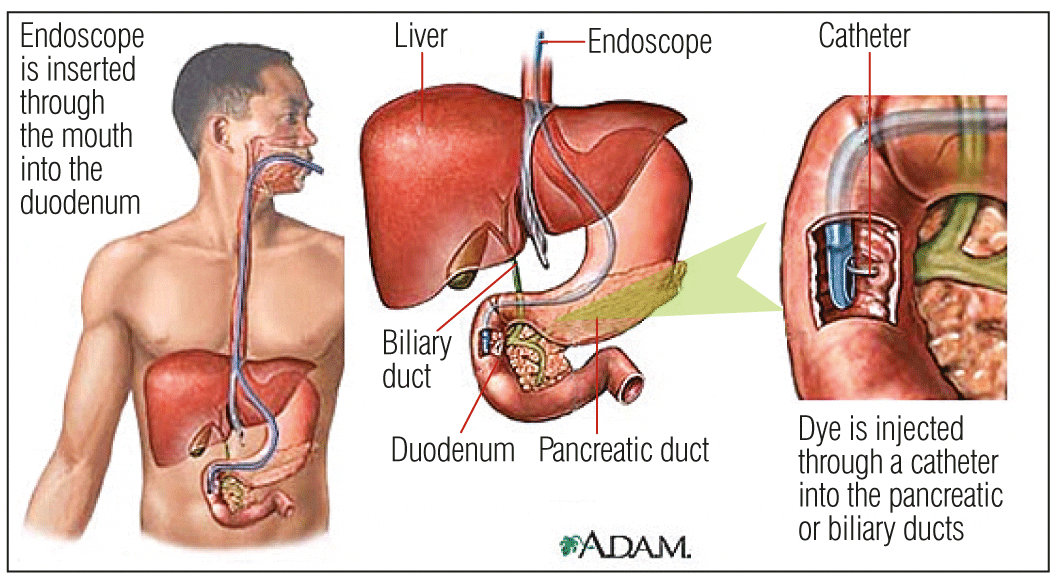
Causes of Gallstones
The exact cause of gallstone formation is not fully understood, but it is thought to be related to an imbalance in the components of bile. Factors that can contribute to gallstone development include:
- High levels of cholesterol or bilirubin in the bile
- Insufficient emptying of the gallbladder
Certain medical conditions and lifestyle factors can also increase the risk of developing gallstones, including:
- Family history of gallstones
- Being female
- Being over the age of 40
- Being of Native American or Mexican descent
- Obesity
- A diet high in fat and cholesterol, but low in fiber
- Lack of physical activity
- Use of birth control pills or hormone replacement therapy
- Pregnancy
- Diabetes
- Certain intestinal diseases like Crohn’s disease
- Hemolytic anemia or cirrhosis of the liver
- Taking medications to lower cholesterol
- Rapid weight loss or fasting
Diagnosing Gallstones
If your doctor suspects you have gallstones, they may order one or more of the following diagnostic tests:
- Blood tests to check for signs of infection or blockage
- Ultrasound imaging to visualize the gallbladder and any stones
- CT scans or magnetic resonance cholangiopancreatography (MRCP) to get a closer look at the gallbladder and bile ducts
- Cholescintigraphy (HIDA scan) to assess gallbladder function
- Endoscopic retrograde cholangiopancreatography (ERCP) to identify and potentially remove stones in the bile ducts
- Endoscopic ultrasound to detect gallstones that may be difficult to see with other imaging tests

Treating Gallstones
If you have asymptomatic gallstones (no symptoms), your doctor may not recommend any immediate treatment. Small stones may even pass through your body on their own.
However, if you experience recurrent gallbladder attacks or complications like blocked bile ducts, your doctor will likely recommend gallbladder removal surgery, known as a cholecystectomy. This is the most common treatment for symptomatic gallstones.
There are two main types of cholecystectomy procedures:
- Laparoscopic cholecystectomy – This minimally invasive procedure involves making several small incisions in the abdomen to remove the gallbladder.
- Open cholecystectomy – This traditional surgery involves making a larger incision in the abdomen to remove the gallbladder.
After gallbladder removal, you can still digest food without it, as the liver continues to produce bile that is then directly released into the small intestine.
Preventing Gallstones
While there is no surefire way to prevent gallstones, you can reduce your risk by:
- Maintaining a healthy weight and avoiding rapid weight loss
- Eating a diet low in saturated fat and high in fiber
- Getting regular physical activity
- Avoiding extended fasting or crash diets
If you have a family history of gallstones or other risk factors, be sure to discuss prevention strategies with your healthcare provider.
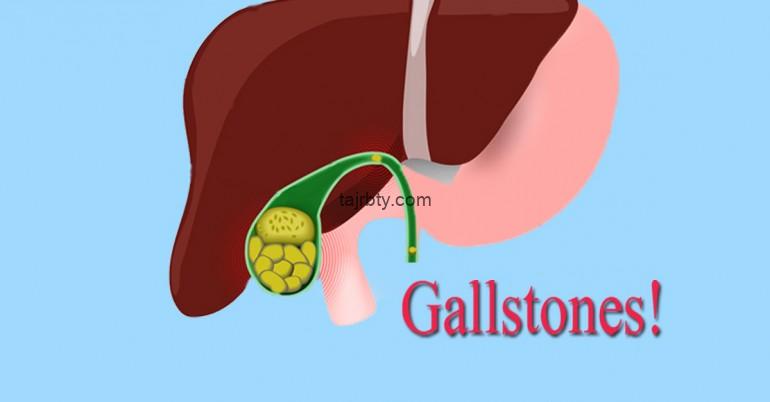
In summary, gallstones are a common condition caused by an imbalance in the components of bile, leading to the formation of solid deposits in the gallbladder. While many people with gallstones experience no symptoms, those who do may suffer from severe abdominal pain, nausea, and other digestive issues. Proper diagnosis and treatment, often involving gallbladder removal surgery, are crucial for managing symptomatic gallstones and preventing complications.
Picture, Symptoms, Types, Causes, Risks, Treatments
Written by WebMD Editorial Contributors
- What Are Gallstones?
- Gallstone Types
- Symptoms of Gallstones
- Causes of Gallstones
- Gallstone Risk Factors
- Gallstone Diagnosis
- Can Gallstones Go Away on Their Own?
- Gallstone Treatment
- Complications of Gallstones
- Preventing Gallstones
- More
Gallstones are pieces of solid material that form in your gallbladder, a small organ under your liver. If you have them, you might hear your doctor say you have cholelithiasis.
Your gallbladder stores and releases bile, a fluid made in your liver, to help in digestion. Bile also carries wastes like cholesterol and bilirubin, which your body makes when it breaks down red blood cells. These things can form gallstones.
Gallstones can range in size from a grain of sand to a golf ball. You might not know that you have them until they block a bile duct, causing pain that needs treatment right away.
The two main kinds of gallstones are:
- Cholesterol stones. These are usually yellow-green. They’re the most common, making up 80% of gallstones.
- Pigment stones. These are smaller and darker. They’re made of bilirubin.
Gallstones don’t normally cause symptoms. Symptoms occur only when a gallstone gets stuck and blocks the flow of bile through your system.
If you have symptoms, they may include:
- Pain in your upper belly, often on the right, just under your ribs
- Pain in your right shoulder or back
- An upset stomach
- Vomiting
- Other digestive problems, including indigestion, heartburn, and gas
See your doctor or go to the hospital if you have signs of a serious infection or inflammation:
- Belly pain that lasts several hours or is severe
- Fever and chills
- Yellow skin or eyes
Doctors aren’t sure exactly what causes gallstones, but they might happen when:
- There’s too much cholesterol in your bile.
 Your body needs bile for digestion. It usually dissolves cholesterol. But when it can’t do that, the extra cholesterol might form stones.
Your body needs bile for digestion. It usually dissolves cholesterol. But when it can’t do that, the extra cholesterol might form stones. - There’s too much bilirubin in your bile. Conditions like cirrhosis, infections, and blood disorders can cause your liver to make too much bilirubin.
- Your gallbladder doesn’t empty all the way. This can make your bile very concentrated.
You’re more likely to get gallstones if you:
- Have a family history of them
- Are a woman
- Are over age 40
- Are of Native American or Mexican descent
- Are obese
- Have a diet high in fat and cholesterol but low in fiber
- Don’t get much exercise
- Use birth control pills or hormone replacement therapy
- Are pregnant
- Have diabetes
- Have an intestinal disease like Crohn’s
- Have hemolytic anemia or cirrhosis of the liver
- Take medicine to lower your cholesterol
- Lose a lot of weight in a short time
- Are fasting
Your doctor will do a physical exam and might order tests including:
Blood tests. These check for signs of infection or blockage, and rule out other conditions.
These check for signs of infection or blockage, and rule out other conditions.
Ultrasound. This makes images of the inside of your body.
CT scan. Specialized X-rays let your doctor see inside your body, including your gallbladder.
Magnetic resonance cholangiopancreatography (MRCP). This test uses a magnetic field and pulses of radio waves to make pictures of the inside of your body, including your liver and gallbladder.
Cholescintigraphy (HIDA scan). This test can check whether your gallbladder squeezes correctly. Your doctor injects a harmless radioactive material that makes its way to the organ. A technician can then watch its movement. This can help diagnose cholecystitis (inflammation of the gallbladder) from gallstones.
Endoscopic retrograde cholangiopancreatography (ERCP). Your doctor runs a tube called an endoscope through your mouth down to your small intestine.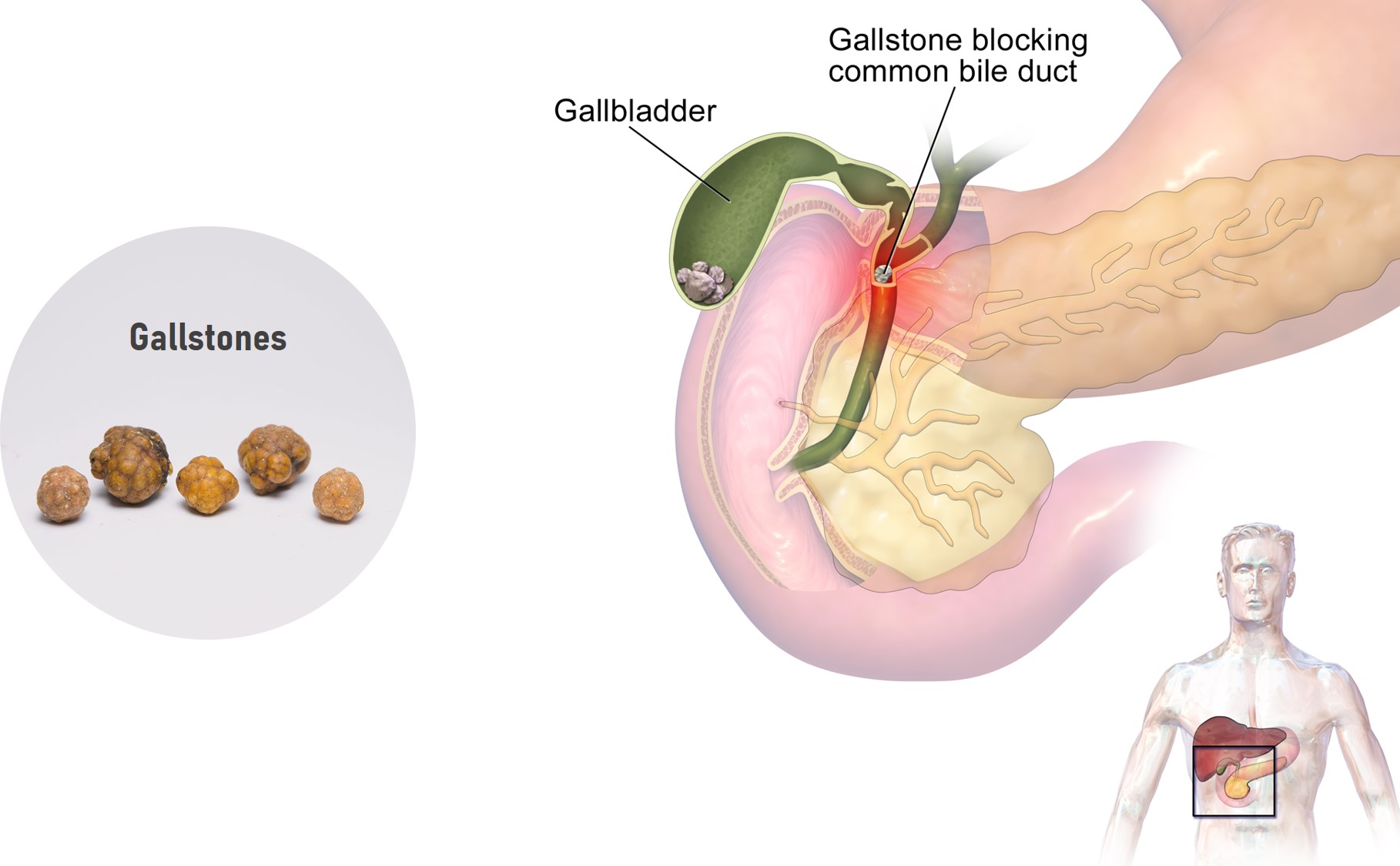 They inject a dye so they can see your bile ducts on a camera in the endoscope. They can often take out any gallstones that have moved into the ducts, but that’s only done if treatment is planned as part of the procedure since it’s invasive.
They inject a dye so they can see your bile ducts on a camera in the endoscope. They can often take out any gallstones that have moved into the ducts, but that’s only done if treatment is planned as part of the procedure since it’s invasive.
Endoscopic ultrasound. This test combines ultrasound and endoscopy to look for gallstones that may be in places that are hard to see with other imaging, such as in the common bile duct as it passes through the pancreas.
If your gallstones aren’t causing symptoms, there’s usually no need for you to have surgery. You’ll only need it if a stone goes into, or blocks, one of your bile ducts. This causes what doctors call a “gallbladder attack.” It’s an intense, knife-like pain in your belly that can last several hours.
If you have sickle cell or another blood disorder, your doctor may consider doing a cholecystectomy as a precaution, even if you don’t have symptoms.
You don’t need treatment if you don’t have symptoms. Some small gallstones can pass through your body on their own.
Some small gallstones can pass through your body on their own.
Most people with gallstones have their gallbladders taken out. You can still digest food without it. Your doctor will use one of two procedures.
Laparoscopic cholecystectomy. This is the most common surgery for gallstones. The surgeon works through tiny cuts (incisions). They pass a narrow tube called a laparoscope into your belly through a small cut. The tube contains a tiny light and a camera. The doctor will take out your gallbladder through another small cut using special devices. You’ll usually go home the same day.
Open cholecystectomy. Your doctor makes bigger cuts in your belly to remove your gallbladder. You’ll stay in the hospital for a few days afterward. You’ll need open surgery if you have a bleeding disorder. You may also need it if you have severe gallbladder disease, are very overweight, or are in your last trimester of pregnancy.
For both types of surgery, you’ll get general anesthesia.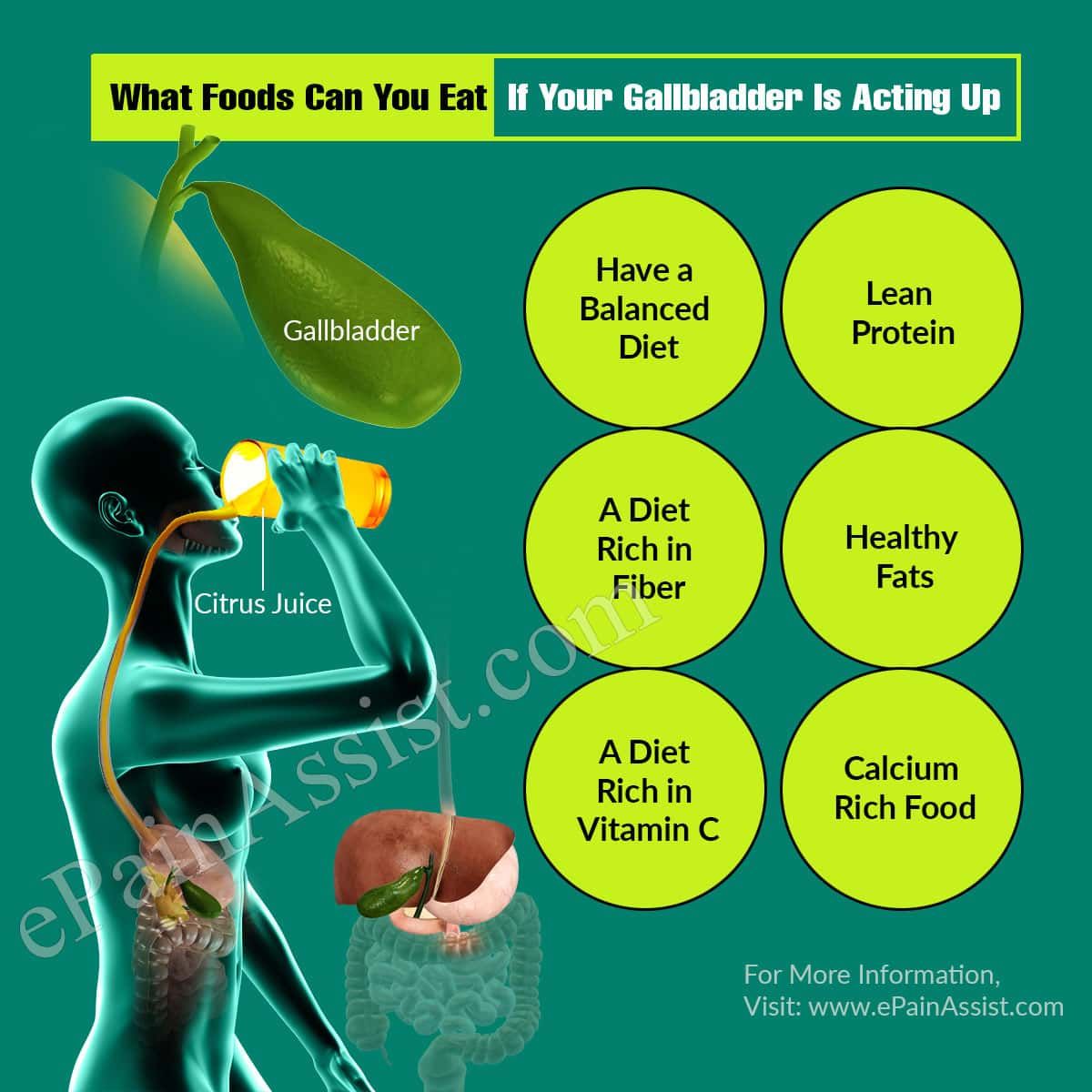 This means you won’t be awake during the procedure.
This means you won’t be awake during the procedure.
If gallstones are in your bile ducts, your doctor may use ERCP to find and remove them before or during surgery.
Nonsurgical treatment: If you have another medical condition and your doctor thinks you shouldn’t have surgery, they might give you medication instead. Chenodiol (Chenodo l) and ursodiol (Actigall, Urso 250, Urso Forte) dissolve cholesterol stones. They can cause mild diarrhea.
You may have to take the medicine for years to totally dissolve the stones, and they may come back after you stop taking it.
Gallstones can cause serious problems, including:
- Gallbladder inflammation (acute cholecystitis). This happens when a stone blocks your gallbladder so it can’t empty. It causes constant pain and fever. Your gallbladder might burst, or rupture, if you don’t get treatment right away.
- Blocked bile ducts. This can cause fever, chills, and yellowing of your skin and eyes (jaundice).
 If a stone blocks the duct to your pancreas, that organ may become inflamed (pancreatitis).
If a stone blocks the duct to your pancreas, that organ may become inflamed (pancreatitis). - Infected bile ducts (acute cholangitis). A blocked duct is more likely to get infected. If the bacteria spread to your bloodstream, they can cause a dangerous condition called sepsis.
- Gallbladder cancer. It’s rare, but gallstones raise your risk of this kind of cancer.
Some lifestyle changes might lower your risk of gallstones.
- Eat a healthy diet that’s high in fiber and good fats, like fish oil and olive oil. Avoid refined carbs, sugar, and unhealthy fats.
- Get regular exercise. Aim for at least 30 minutes, 5 days a week.
- Although obesity is a risk factor, avoid diets that make you lose a lot of weight in a short time.
- If you’re a woman at high risk of gallstones (for example, because of your family history or another health condition), talk to your doctor about whether you should avoid using hormonal birth control.

Top Picks
Picture, Symptoms, Types, Causes, Risks, Treatments
Written by WebMD Editorial Contributors
- What Are Gallstones?
- Gallstone Types
- Symptoms of Gallstones
- Causes of Gallstones
- Gallstone Risk Factors
- Gallstone Diagnosis
- Can Gallstones Go Away on Their Own?
- Gallstone Treatment
- Complications of Gallstones
- Preventing Gallstones
- More
Gallstones are pieces of solid material that form in your gallbladder, a small organ under your liver.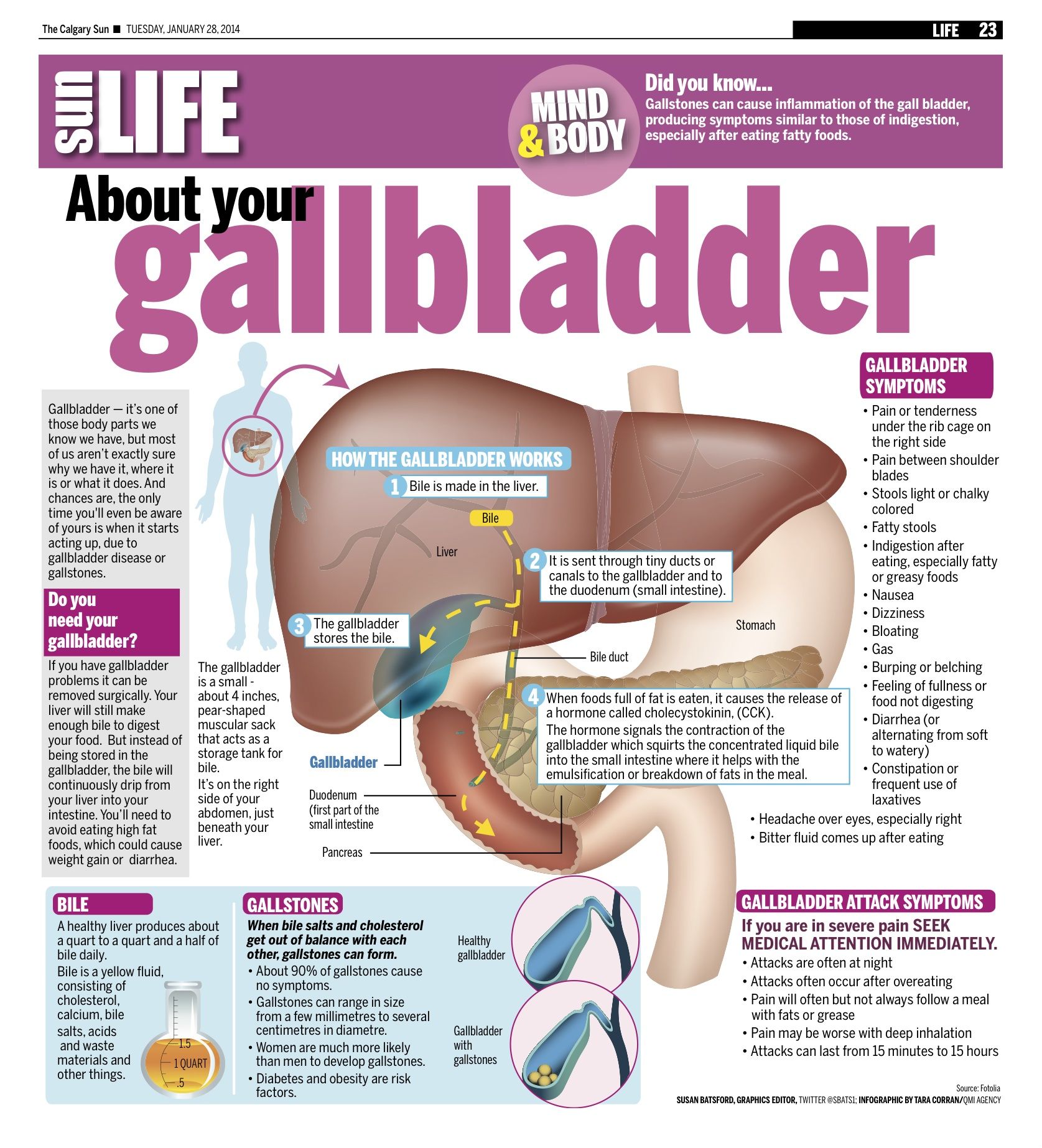 If you have them, you might hear your doctor say you have cholelithiasis.
If you have them, you might hear your doctor say you have cholelithiasis.
Your gallbladder stores and releases bile, a fluid made in your liver, to help in digestion. Bile also carries wastes like cholesterol and bilirubin, which your body makes when it breaks down red blood cells. These things can form gallstones.
Gallstones can range in size from a grain of sand to a golf ball. You might not know that you have them until they block a bile duct, causing pain that needs treatment right away.
The two main kinds of gallstones are:
- Cholesterol stones. These are usually yellow-green. They’re the most common, making up 80% of gallstones.
- Pigment stones. These are smaller and darker. They’re made of bilirubin.
Gallstones don’t normally cause symptoms. Symptoms occur only when a gallstone gets stuck and blocks the flow of bile through your system.
If you have symptoms, they may include:
- Pain in your upper belly, often on the right, just under your ribs
- Pain in your right shoulder or back
- An upset stomach
- Vomiting
- Other digestive problems, including indigestion, heartburn, and gas
See your doctor or go to the hospital if you have signs of a serious infection or inflammation:
- Belly pain that lasts several hours or is severe
- Fever and chills
- Yellow skin or eyes
Doctors aren’t sure exactly what causes gallstones, but they might happen when:
- There’s too much cholesterol in your bile.
 Your body needs bile for digestion. It usually dissolves cholesterol. But when it can’t do that, the extra cholesterol might form stones.
Your body needs bile for digestion. It usually dissolves cholesterol. But when it can’t do that, the extra cholesterol might form stones. - There’s too much bilirubin in your bile. Conditions like cirrhosis, infections, and blood disorders can cause your liver to make too much bilirubin.
- Your gallbladder doesn’t empty all the way. This can make your bile very concentrated.
You’re more likely to get gallstones if you:
- Have a family history of them
- Are a woman
- Are over age 40
- Are of Native American or Mexican descent
- Are obese
- Have a diet high in fat and cholesterol but low in fiber
- Don’t get much exercise
- Use birth control pills or hormone replacement therapy
- Are pregnant
- Have diabetes
- Have an intestinal disease like Crohn’s
- Have hemolytic anemia or cirrhosis of the liver
- Take medicine to lower your cholesterol
- Lose a lot of weight in a short time
- Are fasting
Your doctor will do a physical exam and might order tests including:
Blood tests. These check for signs of infection or blockage, and rule out other conditions.
These check for signs of infection or blockage, and rule out other conditions.
Ultrasound. This makes images of the inside of your body.
CT scan. Specialized X-rays let your doctor see inside your body, including your gallbladder.
Magnetic resonance cholangiopancreatography (MRCP). This test uses a magnetic field and pulses of radio waves to make pictures of the inside of your body, including your liver and gallbladder.
Cholescintigraphy (HIDA scan). This test can check whether your gallbladder squeezes correctly. Your doctor injects a harmless radioactive material that makes its way to the organ. A technician can then watch its movement. This can help diagnose cholecystitis (inflammation of the gallbladder) from gallstones.
Endoscopic retrograde cholangiopancreatography (ERCP). Your doctor runs a tube called an endoscope through your mouth down to your small intestine.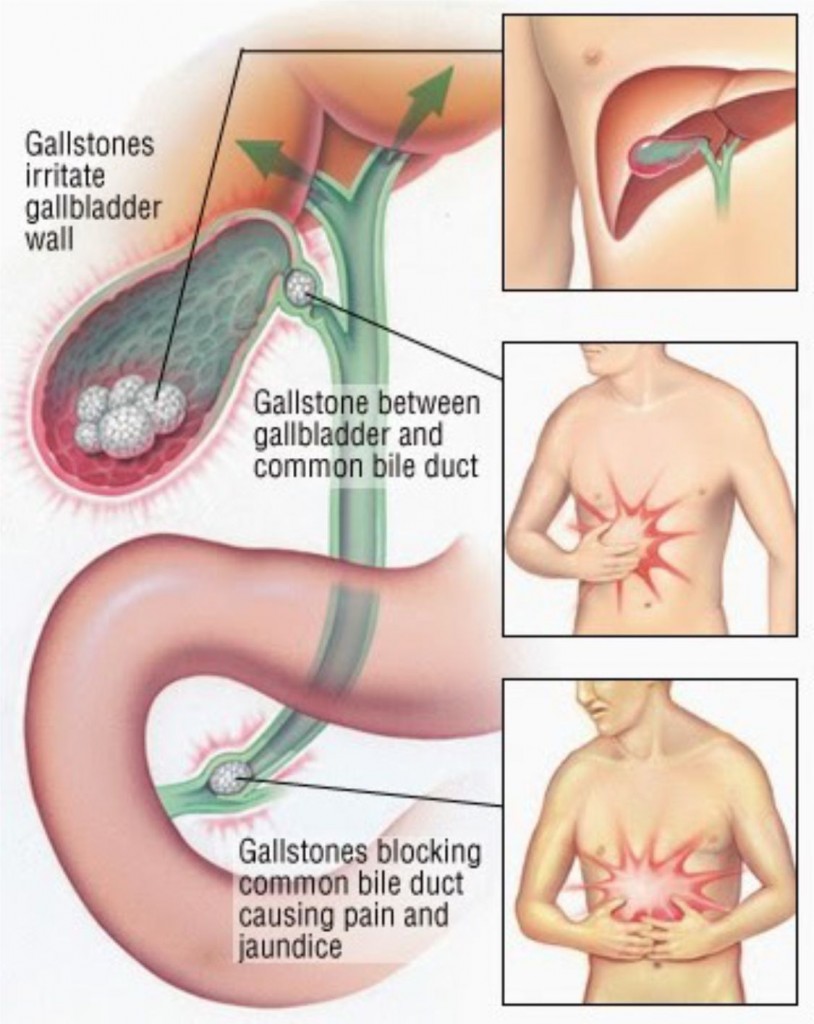 They inject a dye so they can see your bile ducts on a camera in the endoscope. They can often take out any gallstones that have moved into the ducts, but that’s only done if treatment is planned as part of the procedure since it’s invasive.
They inject a dye so they can see your bile ducts on a camera in the endoscope. They can often take out any gallstones that have moved into the ducts, but that’s only done if treatment is planned as part of the procedure since it’s invasive.
Endoscopic ultrasound. This test combines ultrasound and endoscopy to look for gallstones that may be in places that are hard to see with other imaging, such as in the common bile duct as it passes through the pancreas.
If your gallstones aren’t causing symptoms, there’s usually no need for you to have surgery. You’ll only need it if a stone goes into, or blocks, one of your bile ducts. This causes what doctors call a “gallbladder attack.” It’s an intense, knife-like pain in your belly that can last several hours.
If you have sickle cell or another blood disorder, your doctor may consider doing a cholecystectomy as a precaution, even if you don’t have symptoms.
You don’t need treatment if you don’t have symptoms.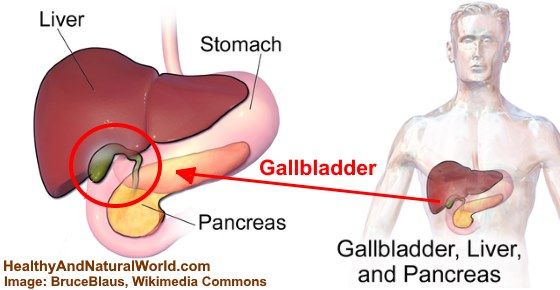 Some small gallstones can pass through your body on their own.
Some small gallstones can pass through your body on their own.
Most people with gallstones have their gallbladders taken out. You can still digest food without it. Your doctor will use one of two procedures.
Laparoscopic cholecystectomy. This is the most common surgery for gallstones. The surgeon works through tiny cuts (incisions). They pass a narrow tube called a laparoscope into your belly through a small cut. The tube contains a tiny light and a camera. The doctor will take out your gallbladder through another small cut using special devices. You’ll usually go home the same day.
Open cholecystectomy. Your doctor makes bigger cuts in your belly to remove your gallbladder. You’ll stay in the hospital for a few days afterward. You’ll need open surgery if you have a bleeding disorder. You may also need it if you have severe gallbladder disease, are very overweight, or are in your last trimester of pregnancy.
For both types of surgery, you’ll get general anesthesia.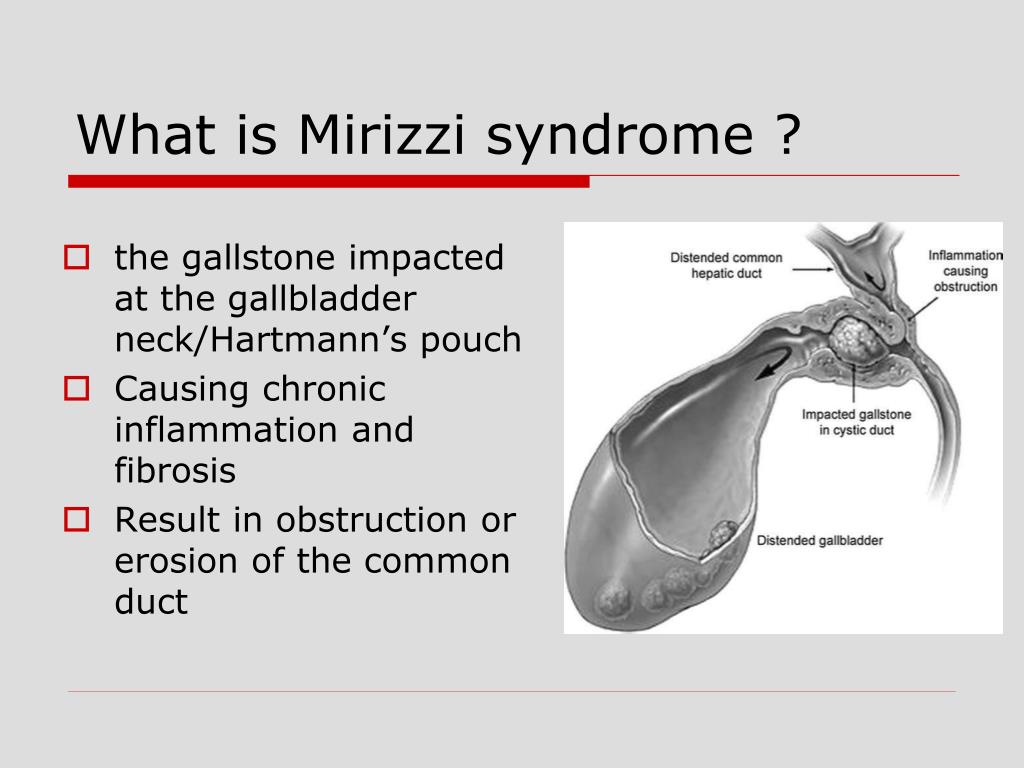 This means you won’t be awake during the procedure.
This means you won’t be awake during the procedure.
If gallstones are in your bile ducts, your doctor may use ERCP to find and remove them before or during surgery.
Nonsurgical treatment: If you have another medical condition and your doctor thinks you shouldn’t have surgery, they might give you medication instead. Chenodiol (Chenodo l) and ursodiol (Actigall, Urso 250, Urso Forte) dissolve cholesterol stones. They can cause mild diarrhea.
You may have to take the medicine for years to totally dissolve the stones, and they may come back after you stop taking it.
Gallstones can cause serious problems, including:
- Gallbladder inflammation (acute cholecystitis). This happens when a stone blocks your gallbladder so it can’t empty. It causes constant pain and fever. Your gallbladder might burst, or rupture, if you don’t get treatment right away.
- Blocked bile ducts. This can cause fever, chills, and yellowing of your skin and eyes (jaundice).
 If a stone blocks the duct to your pancreas, that organ may become inflamed (pancreatitis).
If a stone blocks the duct to your pancreas, that organ may become inflamed (pancreatitis). - Infected bile ducts (acute cholangitis). A blocked duct is more likely to get infected. If the bacteria spread to your bloodstream, they can cause a dangerous condition called sepsis.
- Gallbladder cancer. It’s rare, but gallstones raise your risk of this kind of cancer.
Some lifestyle changes might lower your risk of gallstones.
- Eat a healthy diet that’s high in fiber and good fats, like fish oil and olive oil. Avoid refined carbs, sugar, and unhealthy fats.
- Get regular exercise. Aim for at least 30 minutes, 5 days a week.
- Although obesity is a risk factor, avoid diets that make you lose a lot of weight in a short time.
- If you’re a woman at high risk of gallstones (for example, because of your family history or another health condition), talk to your doctor about whether you should avoid using hormonal birth control.

Top Picks
Cholelithiasis – what to do?
What should a person do if such a thing as gallbladder stones suddenly and insidiously burst into his life?
Gallstone disease is a chronic inflammatory disease of the biliary tract, accompanied by the formation of stones most often in the gallbladder (cholecystolithiasis) or bile ducts (choledocholithiasis).
The disease is based on a change in the viscosity of bile (dyscholia), associated with a violation of the physicochemical properties of bile. Stones are formed as a result of precipitation of bile pigments, cholesterol, certain types of proteins, calcium salts, infection of bile, its stagnation, lipid metabolism disorders.
Stones are formed as a result of precipitation of bile pigments, cholesterol, certain types of proteins, calcium salts, infection of bile, its stagnation, lipid metabolism disorders.
According to the World Health Organization, gallstones can be found in 10-12% of the world’s population. In countries with developed economies – even more often. Every fifth woman and every tenth man suffers from this disease. Over the past decade, the incidence of this disease has doubled.
Gallstones are cholesterol (the vast majority, about 90% of the variants of gallstones), as well as pigmented and mixed stones. So, due to a supersaturation of bile with cholesterol, the formation of cholesterol stones, its precipitation, and the formation of crystals occur. Violation in the gallbladder of the motility leads to the fact that these crystals do not enter the intestine, which ultimately leads to their gradual growth. Pigment stones (also called bilirubin stones) form when there is an increased breakdown of red blood cells, which occurs with topical hemolytic anemia. As for mixed stones, they are a kind of combination based on the processes of both forms. Such stones contain cholesterol, bilirubin and calcium, the very process of their formation occurs as a result of inflammatory diseases affecting the biliary tract and, in fact, the gallbladder.
As for mixed stones, they are a kind of combination based on the processes of both forms. Such stones contain cholesterol, bilirubin and calcium, the very process of their formation occurs as a result of inflammatory diseases affecting the biliary tract and, in fact, the gallbladder.
Causes contributing to the formation of gallstones
- unbalanced diet – the predominance of animal fats
- hormonal disorders
- sedentary lifestyle
- disorders associated with fat metabolism, weight gain
- inflammation and other abnormalities occurring in the gallbladder
- various kinds of liver damage
- pregnancy
- fasting
- heredity
- diabetes mellitus, etc.
Classification
Based on the features of the disease accepted today, the following classification is distinguished according to the stages that are relevant to it:
- The physico-chemical (initial) stage – or, as it is also called, the pre-stone stage.
 It is characterized by changes occurring in the composition of bile. There may be no special clinical manifestations at this stage or they may be minimal. It is detected mainly during ultrasound diagnostics, biliary sludge or thickening of bile in the gallbladder is determined. This stage is most favorable for medical (non-surgical) treatment.
It is characterized by changes occurring in the composition of bile. There may be no special clinical manifestations at this stage or they may be minimal. It is detected mainly during ultrasound diagnostics, biliary sludge or thickening of bile in the gallbladder is determined. This stage is most favorable for medical (non-surgical) treatment. - Stone formation is a stage that is also defined as latent stone bearing. In this case, there are no symptoms of cholelithiasis, however, the use of instrumental diagnostic methods makes it possible to determine the presence of stones in the gallbladder (ultrasound diagnostics, computed tomography). Depending on the size, density of stones, indications for medical or surgical treatment are determined.
- Clinical manifestations – a stage whose symptoms indicate the development of an acute or chronic form of calculous cholecystitis. The main treatment of this stage is the surgical removal of the gallbladder with stones.
Operate or not
Only a surgeon or gastroenterologist can answer this question after an individual consultation.
Medical litholysis
Non-surgical treatment of cholesterol stones is currently possible, but it should be timely, at the stage of formation of a soft and small stone (that is, in the first or second stages of cholelithiasis).
To determine the possibility of therapeutic treatment of cholecystitis with stones, it is necessary to examine the gallbladder using computed tomography to determine the density of the stone and bile.
MSCT of the gallbladder is performed at the Lotos Medical Center to determine the density of calculi. This study has many advantages over abdominal ultrasound, because determines the density of the stone, and hence its ability to dissolve. Dense, calcareous stones in Hounsfield units according to CT are more than 100 units and cannot be dissolved by drugs. Soft, cholesterol from 30 to 90 units can be medically dissolved. The size of the stone also matters – stones dissolve up to 10-15 mm, with less than 1/3 filling of the gallbladder.
Special bile acid preparations such as those found in human bile can be used to dissolve small stones. Bile acid preparations are effective not only for dissolving stones, but also for preventing their formation. They are appointed by a specialist gastroenterologist. The course of treatment is at least six months, and only under the supervision of a doctor.
Is it necessary to remove the gallbladder if the stone does not bother
Currently, the vast majority of surgeons agree that patients with asymptomatic cholelithiasis with a first discovered small stone should not immediately undergo prophylactic cholecystectomy (removal of the gallbladder). The risk of developing severe complications with small single stones is estimated to be low, therefore, such patients should undergo regular abdominal ultrasound examinations and follow lifestyle and nutrition recommendations.
In the case of calculous cholecystitis, when the patient is periodically disturbed by bouts of biliary colic, doctors recommend cholecystectomy, which should be performed in a planned manner. Each subsequent attack can cause the development of acute cholecystitis, which can be accompanied by severe complications from the liver and pancreas.
Each subsequent attack can cause the development of acute cholecystitis, which can be accompanied by severe complications from the liver and pancreas.
If a picture of acute cholecystitis develops – biliary colic lasts more than 3 hours, pain is localized in the right upper quadrant of the abdomen, is not relieved by antispasmodic drugs, the temperature rises, nausea and vomiting occur – an ambulance should be called.
Radical treatment of disease
Surgery for cholelithiasis is the gold standard for the treatment of this pathology. Its goal is to remove the container for calculi, avoiding the recurrence of biliary colic, as well as preventing the occurrence of obstructive jaundice, cholangiogenic sepsis, and biliary peritonitis. Performed in a planned manner, that is, even before the development of complications, the operation is safe. The chance of complete recovery after surgery is about 95%.
“Off”, that is, a gallbladder clogged with stones, cannot be cured without surgery.
The operation can be performed in two ways – abdominal and laparoscopic.
Open surgery
This is a “big” operation in which an incision is made on the front wall of the abdomen under general anesthesia. As a result of this access, surgeons can clearly examine and feel all the bile ducts, perform local ultrasound or x-rays with contrast to remove any existing stones. The method is indispensable for inflammatory and cicatricial processes in the area under the liver. The disadvantages of this intervention are: a longer recovery period after surgery; greater chance of developing incisional hernias; cosmetic defect; more complications develop after surgery.
Laparoscopic method
The most commonly used method of surgical treatment. The laparoscopy operation performed for cholelithiasis is an intervention under visual control using a fiber optic device connected to a monitor through several small incisions on the abdominal wall.
The laparoscopic method has many advantages over abdominal surgery:
- the wound hurts not so much and not so long
- it does not restrict breathing
- intestinal paresis is not expressed
- less severe cosmetic defect
There are also negative sides to laparoscopic cholecystectomy – more contraindications to surgery.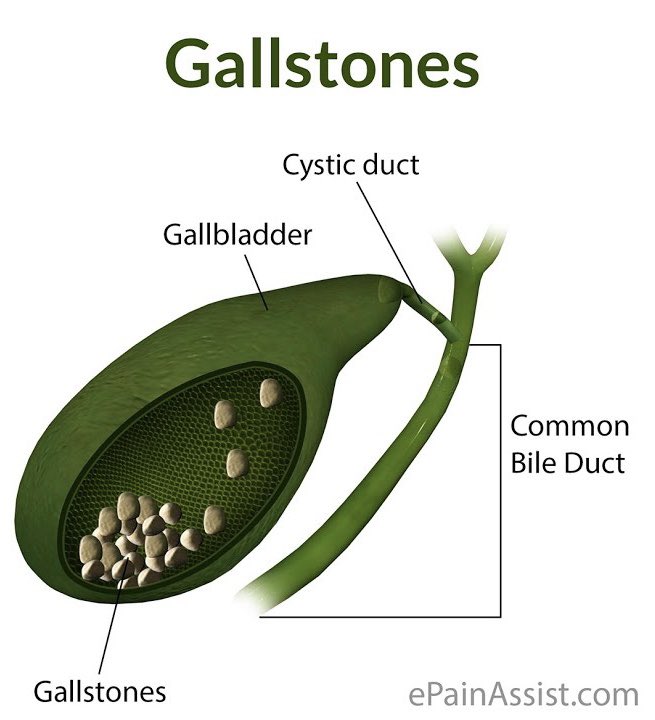 In particular, the laparoscopic method cannot be used not only for severe disorders of the heart, blood vessels and lungs, but also in the following cases: obesity, peritonitis, late pregnancy, acute pancreatitis, obstructive jaundice, fistulas between the internal organs and bile ducts, gallbladder cancer , adhesive process in the upper parts of the abdominal cavity, acute cholecystitis (if more than 2 days have passed since the moment of the disease), cicatricial changes in the hepatobiliary zone.
In particular, the laparoscopic method cannot be used not only for severe disorders of the heart, blood vessels and lungs, but also in the following cases: obesity, peritonitis, late pregnancy, acute pancreatitis, obstructive jaundice, fistulas between the internal organs and bile ducts, gallbladder cancer , adhesive process in the upper parts of the abdominal cavity, acute cholecystitis (if more than 2 days have passed since the moment of the disease), cicatricial changes in the hepatobiliary zone.
Regardless of how many stones are found in the gallbladder – one large or many small – the gallbladder is removed completely.
This is how the removal of the gallbladder on the monitor of the laparoscopic unit looks like:
In our medical center, highly qualified surgeons in a high-tech surgical hospital will be able to perform cholecystectomy using the method that is necessary in your particular case.
Is it possible to live without a gallbladder
A pathologically altered gallbladder cannot fully perform its functions, and is the cause of constant pain and a source of chronic infection.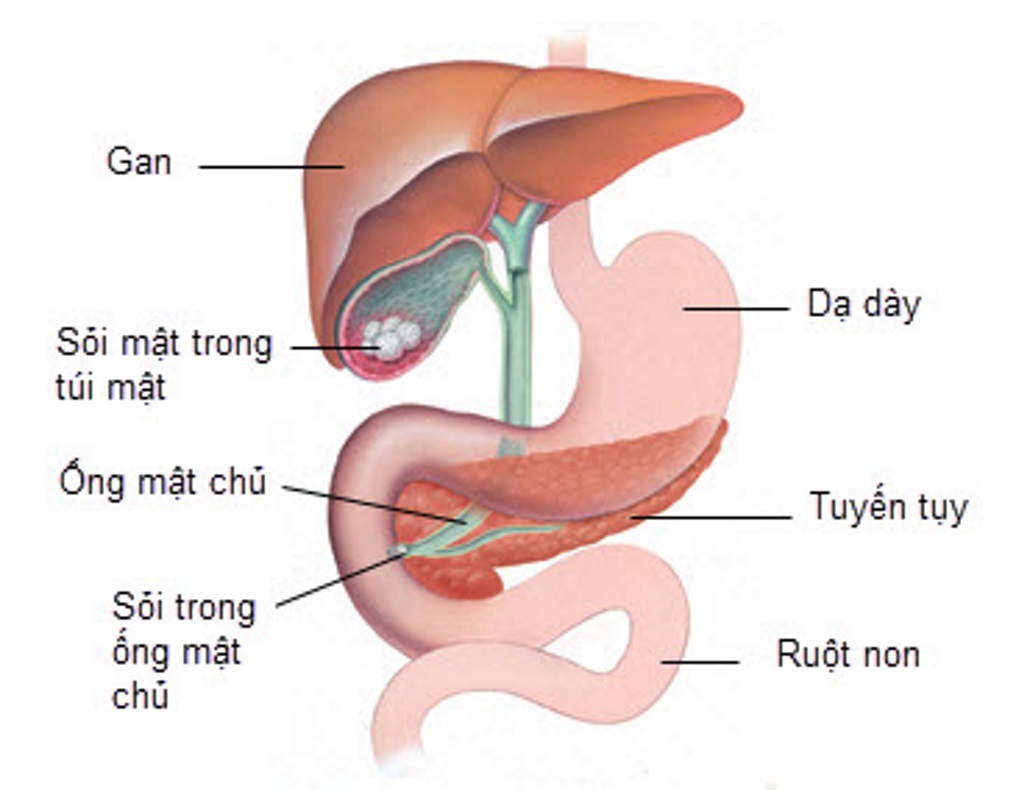 Therefore, cholecystectomy, performed in accordance with the indications of a qualified physician, improves the patient’s condition and does not affect the function of digestion.
Therefore, cholecystectomy, performed in accordance with the indications of a qualified physician, improves the patient’s condition and does not affect the function of digestion.
If you or your loved ones have cholelithiasis, you need to act quickly and correctly, without triggering the disease. Properly selected examination and treatment in our center will help to cope with the problem of gallstones.
Be healthy!
Cholelithiasis – Clinic 29
Gallstone disease (GSD) is a disease in which stones form in the gallbladder or bile ducts. Gallstone disease has been known since ancient times. Galen also discovered gallstones during the autopsy of corpses. Mentions of cholelithiasis are found in the writings of doctors of the Renaissance. Currently, every tenth inhabitant of our planet suffers from gallstone disease, and this disease of civilization is becoming a social problem.
Causes of cholelithiasis
Gallstone disease in both adults and children is a multifactorial disease. The main factors are:
The main factors are:
- Malnutrition
- Poor quality drinking water
- Heredity
- Physical inactivity
- Bad habits
- Disruption of intestinal microflora
- Stress
- Uncontrolled intake of drugs, etc., that is, all those factors that lead to metabolic disorders, especially cholesterol metabolism.
Leading links in the process of stone formation: stagnation of bile in the gallbladder and an increase in the concentration of salts in bile due to metabolic disorders.
Can cause gallstone disease:
- overeating, starvation, irregular meals;
- sedentary lifestyle, especially sedentary work;
- pregnancy;
- taking hormonal contraceptives;
- obesity;
- biliary dyskinesia;
- diseases of the pancreas.
Clinical picture
There are three variants of the clinical picture of cholelithiasis:
- asymptomatic lithiasis;
- clinical manifestation, manifested by abdominal pain and dyspeptic disorders;
- gallstone colic.

Asymptomatic stone carrying is assumed when there are no complaints, and stones in the gallbladder (ducts) are an incidental diagnostic finding, more often on ultrasound. Unfortunately, the stones do not dissolve by themselves, and the disease will manifest itself in other forms over time.
Abdominal pain and dyspeptic disorders are the main complaints. In adults, pain is usually in the right hypochondrium, more often in the form of a feeling of heaviness and is provoked by a violation of the diet (overeating, fatty, fried foods). The nature of the pain depends on the size of the stones. Dull, drawing, vague pains are characteristic of patients with single stones or large stones. Multiple, small, easily moving stones, as a rule, give acute paroxysmal pain – gallstone colic.
Sometimes a small stone passes from the gallbladder into the bile ducts. In this case, an attack of gallstone disease occurs: there is a sharp pain in the right hypochondrium or in the upper abdomen. It can “give” to the right collarbone, right arm or back under the shoulder blade. In this case, bitterness appears in the mouth, nausea and vomiting, which does not bring relief, the sclera of the eyes may turn yellow. If the stone (with a relatively small size) was able to bypass the ducts and fall into the duodenum, the attack stops on its own, and the stone comes out with feces. Otherwise, there is a blockage of the biliary tract and there is a danger of developing acute cholecystitis and mechanical (subhepatic) jaundice. In this case, in addition to the typical picture of colic, yellowness of the skin, discolored stools, and dark urine appear. Pain can spread to other areas of the upper abdomen, often there are “girdle” pains – a sign of blockage not only of the biliary tract, but also of the pancreatic duct. Obturation (blockage) of the excretory ducts is a very dangerous condition!
It can “give” to the right collarbone, right arm or back under the shoulder blade. In this case, bitterness appears in the mouth, nausea and vomiting, which does not bring relief, the sclera of the eyes may turn yellow. If the stone (with a relatively small size) was able to bypass the ducts and fall into the duodenum, the attack stops on its own, and the stone comes out with feces. Otherwise, there is a blockage of the biliary tract and there is a danger of developing acute cholecystitis and mechanical (subhepatic) jaundice. In this case, in addition to the typical picture of colic, yellowness of the skin, discolored stools, and dark urine appear. Pain can spread to other areas of the upper abdomen, often there are “girdle” pains – a sign of blockage not only of the biliary tract, but also of the pancreatic duct. Obturation (blockage) of the excretory ducts is a very dangerous condition!
Diagnosis of cholelithiasis
Diagnosis is based on the clinical picture, on examination of the patient – the doctor can determine tenderness at specific points, on changes in blood and urine tests in the presence of inflammation in the gallbladder and / or a violation of the outflow of bile. Ultrasound reveals formations in the gallbladder, but with symptoms of severe cholecystitis (inflammation), stones may not be visible, ultrasound does not always detect stones that have entered the ducts. Then X-ray methods of research are used: retrograde cholecystopancreatography (RCPG) is the most common method.
Ultrasound reveals formations in the gallbladder, but with symptoms of severe cholecystitis (inflammation), stones may not be visible, ultrasound does not always detect stones that have entered the ducts. Then X-ray methods of research are used: retrograde cholecystopancreatography (RCPG) is the most common method.
Treatment of cholelithiasis
The tactics of treatment of cholelithiasis is determined by the clinical picture, the position of the stones and the timing of the patient’s request for medical help. Non-surgical methods of treatment are rarely used, mainly in children during the period of hormonal instability, in adults in the preoperative period. In case of cholelithiasis, it is prescribed:
- diet with the exception of fatty, fried, smoked, spicy. Food should be fractional, without overeating. Particular importance is attached to the use of vegetables and fruits, wheat bran and other foods containing dietary fiber.
 They bind bile acids in the intestine, which promotes their synthesis in the liver.
They bind bile acids in the intestine, which promotes their synthesis in the liver. - motor mode: we avoid both hypodynamia and excessive physical exertion. Walking, table tennis, billiards are shown.
- Cholagogue preparations, herbs and tubes are contraindicated!
Surgical treatment
If you have applied for a planned appointment outside the acute phase of gallstone disease, the stones are located only in the gallbladder, and not in the ducts, then you will perform a laparoscopic cholecystectomy (removal of the gallbladder). If stones are localized only in the gallbladder, radical surgery – cholecystectomy in most cases leads to a permanent cure for cholelithiasis. Cholecystectomy is a pathogenetically substantiated operation: the shock organ is removed, i.e. already a defective organ with impaired function and a constant source of infection. All this leads to an acceleration of the circulation of bile acids between the intestines and the liver, a decrease in the stone-forming properties of hepatic bile, and the prevention of the formation of gallstones.
If you delayed the operation for cholelithiasis or tried to “expel” the stones and there was an obstruction of the biliary tract. Such a situation can end with a laparotomy (large abdominal incision), sometimes even with the removal of part of the biliary tract and the imposition of various non-physiological, but vital, connections between organs for the outflow of bile.
Do not be afraid of the operation! The only radical way to treat gallstone disease is to remove the diseased gallbladder. Currently, a special technique has been developed for laparoscopic surgery (the operation is performed using several punctures of the abdominal wall). It is less traumatic, and the patient can get up on the day of the operation. The cosmetic effect is also important – the absence of seams on the body. This issue is especially of concern to girls, because no one wants past illnesses and operations to be read on his body.
After removal of the gallbladder, you can safely return to normal life and practically do not adhere to any diet.
Complications of cholelithiasis
– Infections. The most serious complication of acute cholecystitis caused by gallstones is infection, which occurs in about 20% of cases.
– Gangrene and abscess. Severe inflammation can cause abscess and necrosis (destruction) of tissue in the gallbladder, leading to gangrene. At high risk are men over 50 who have a history of cardiovascular disease.
– Perforation (rupture) of the gallbladder. An estimated 10% of cases of acute cholecystitis due to gallstones have gallbladder perforation, a life-threatening condition. In general, it occurs in people who have not sought help for too long, or in people who do not respond to treatment. Gallbladder perforation is most common in people with diabetes. After the wall of the gallbladder has been perforated, the pain may temporarily decrease. This dangerous delusion threatens with the development of peritonitis and the spread of infection into the abdominal cavity.
– Empyema. Pus in the gallbladder (empyema) occurs in 2 to 3% of patients with acute cholecystitis. Patients usually experience abdominal pain for more than 7 days. Physical examination often does not always immediately reveal the cause. Empyema can be life-threatening, especially if the infection spreads to other parts of the body.
– Fistula. In some cases, inflammation of the gallbladder spreads and results in perforation of nearby organs, such as the small intestine. In such cases, a fistula is formed between the organs, which is a channel or opening. Sometimes, in such cases, gallstones may actually pass into the small intestine. This can be very serious and requires immediate surgery.
— Gallstone obstruction. Gallstone blockage of the bowel is known as gallstone ileus. It primarily occurs in patients over 65 years of age and can sometimes be fatal. Depending on where the stone is located, surgery may be required to remove it.
– Infection of the common bile duct (cholangitis). Infection of the common bile duct is a very dangerous serious disease. If antibiotics are given immediately, the infection is cured in 75% of patients. If cholangitis is not stopped, the infection can spread and become life-threatening.
– Pancreatitis. Common bile duct stones are responsible for most cases of pancreatitis (inflammation of the pancreas).
– Cancer of the gallbladder. Gallstones occur in about 80% of people with gallbladder cancer. There is a strong relationship between gallbladder cancer and gallstone disease, chronic cholecystitis, and inflammation. Symptoms of gallbladder cancer usually do not appear until the disease has reached the last stage, and may include weight loss, anemia, recurrent vomiting, and foreign body sensation in the abdomen. However, this cancer is very rare, even among people with gallstones.
– Porcelain gallbladder.

 Your body needs bile for digestion. It usually dissolves cholesterol. But when it can’t do that, the extra cholesterol might form stones.
Your body needs bile for digestion. It usually dissolves cholesterol. But when it can’t do that, the extra cholesterol might form stones. If a stone blocks the duct to your pancreas, that organ may become inflamed (pancreatitis).
If a stone blocks the duct to your pancreas, that organ may become inflamed (pancreatitis).
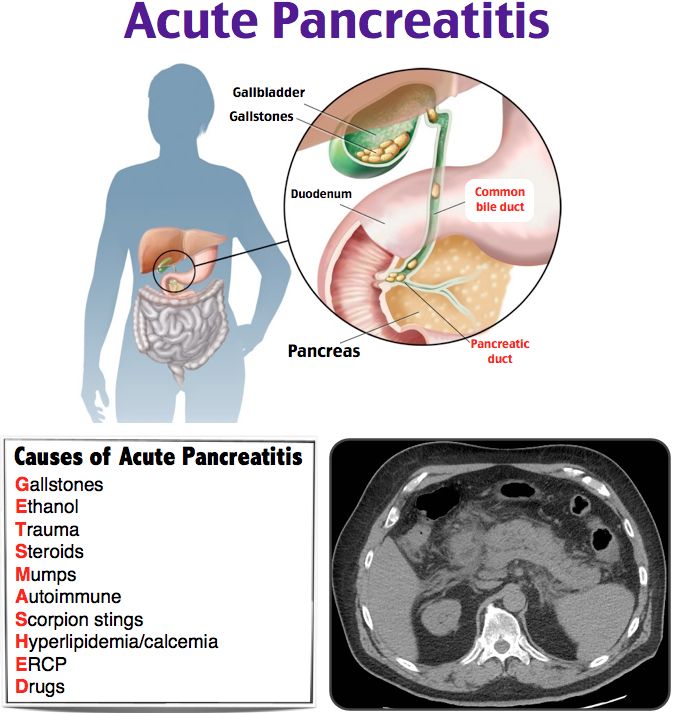 Your body needs bile for digestion. It usually dissolves cholesterol. But when it can’t do that, the extra cholesterol might form stones.
Your body needs bile for digestion. It usually dissolves cholesterol. But when it can’t do that, the extra cholesterol might form stones. If a stone blocks the duct to your pancreas, that organ may become inflamed (pancreatitis).
If a stone blocks the duct to your pancreas, that organ may become inflamed (pancreatitis).
 It is characterized by changes occurring in the composition of bile. There may be no special clinical manifestations at this stage or they may be minimal. It is detected mainly during ultrasound diagnostics, biliary sludge or thickening of bile in the gallbladder is determined. This stage is most favorable for medical (non-surgical) treatment.
It is characterized by changes occurring in the composition of bile. There may be no special clinical manifestations at this stage or they may be minimal. It is detected mainly during ultrasound diagnostics, biliary sludge or thickening of bile in the gallbladder is determined. This stage is most favorable for medical (non-surgical) treatment.
 They bind bile acids in the intestine, which promotes their synthesis in the liver.
They bind bile acids in the intestine, which promotes their synthesis in the liver.